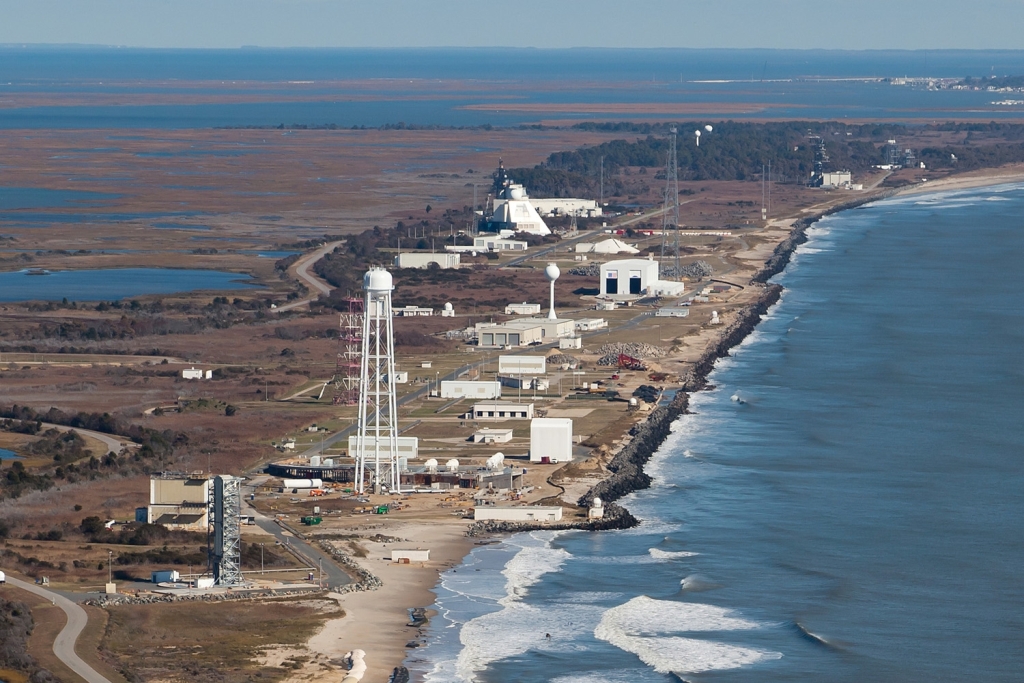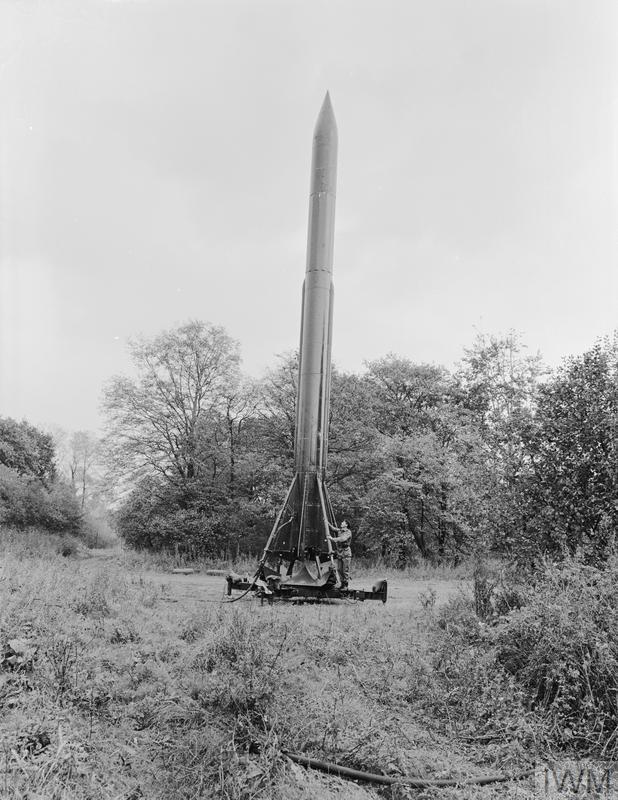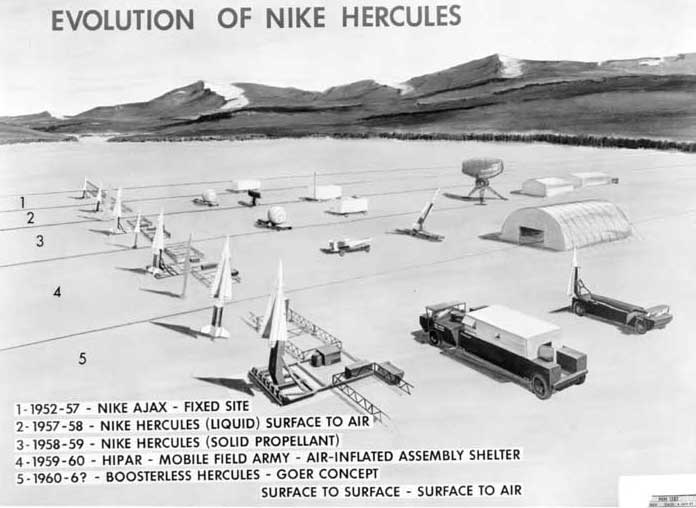|
Air Power Park
The Air Power Park is an outdoor, roadside museum in Hampton, Virginia which recognizes Hampton's role in America's early space exploration and aircraft testing. The outdoor park is open year-round, seven days a week from sunrise to sunset. Several vintage aircraft and experimental space launch vehicles from the 1950s and 1960s are displayed out of doors. The park is on a plot and includes a children's playground. The indoor museum at the center of the park was reopened after a 2011 renovation (with hours more limited than the outdoor part of the park). There are eight themed rooms containing over 325 models of aircraft, space craft, and nautical vessels representing all the U.S. branches of service as well as various model craft from other nations. The park also has a time capsule Indoor museum *NASA Room *United States Air Force Aviation Room- Including items highlighting nearby Langley Air Force Base's contribution to the USAF. *General Aviation Room *Library *Cold War Era ... [...More Info...] [...Related Items...] OR: [Wikipedia] [Google] [Baidu] |
F-89J Hampton Air Power Park VA 2007
The Northrop F-89 Scorpion was an American all-weather, twin-engined interceptor aircraft An interceptor aircraft, or simply interceptor, is a type of fighter aircraft designed specifically for the defensive interception role against an attacking enemy aircraft, particularly bombers and reconnaissance aircraft. Aircraft that are cap ... built during the 1950s, the first turbojet, jet-powered aircraft designed for that role from the outset to enter service. Though its straight wings limited its performance, it was among the first United States Air Force (USAF) jet fighter aircraft, fighters equipped with guided missiles and notably the first combat aircraft armed with air-to-air nuclear weapons (the unguided AIR-2 Genie, Genie rocket). Design and development The Scorpion stemmed from a United States Army Air Forces (USAAF) Air Technical Service Command specification ("Military Characteristics for All-Weather Fighting Aircraft") for a night fighter to replace the P-61 Black ... [...More Info...] [...Related Items...] OR: [Wikipedia] [Google] [Baidu] |
F-4 Phantom II Variants
The McDonnell Douglas F-4 Phantom II variants were numerous versions and designations of the F-4 and are described below. Production numbers for major versions asterisk indicates converted from other version Variants ;XF4H-1 :Two prototypes for the United States Navy, first flown 1958. ;F4H-1F (F-4A) :Two-seat all-weather carrier-based fighter for the US Navy, J79-GE-2 and -2A engines with 16,100 lbf (71.6 kN) of afterburner thrust each. Named Phantom II in 1959 and redesignated F-4A in 1962; 45 built.Francillon 1979, p.559. ;TF-4A :A small number of F-4As converted into two-seat training aircraft. ;F4H-1 (F-4B) :Two-seat all-weather carrier-based fighter and ground-attack aircraft for the US Navy and Marine Corps. J79-GE-8A or -8B engines with 16,950 lbf (75.4 kN) of afterburner thrust each. Redesignated F-4B in 1962; 649 built.Francillon 1979, pp.559-560. ;DF-4B :F-4Bs converted into drone control aircraft. ;EF-4B :One F-4B converted into an ECM training aircraft. ;NF-4B ... [...More Info...] [...Related Items...] OR: [Wikipedia] [Google] [Baidu] |
Aerospace Museums In Virginia
Aerospace is a term used to collectively refer to the atmosphere and outer space. Aerospace activity is very diverse, with a multitude of commercial, industrial and military applications. Aerospace engineering consists of aeronautics and astronautics. Aerospace organizations research, design, manufacture, operate, or maintain both aircraft and spacecraft. The beginning of space and the ending of the air is considered as 100 km (62 mi) above the ground according to the physical explanation that the air pressure is too low for a lifting body to generate meaningful lift force without exceeding orbital velocity. Overview In most industrial countries, the aerospace industry is a cooperation of the public and private sectors. For example, several states have a civilian space program funded by the government, such as National Aeronautics and Space Administration in the United States, European Space Agency in Europe, the Canadian Space Agency in Canada, Indian Space Research ... [...More Info...] [...Related Items...] OR: [Wikipedia] [Google] [Baidu] |
Rocket Garden
A rocket garden is a display of missiles, sounding rockets, or space launch vehicles, usually in an outdoor setting. The proper form of the term usually refers to the Rocket Garden at the Kennedy Space Center Visitor Complex. With rare exceptions, rockets are expendable, so rockets in displays have not been flown. As in the case of the Saturn V, " . Retrieved on 9 January 2012. later planned missions were cancelled, leaving unneeded rockets for the museums. For displays of early American space hardware, such as |
List Of Aerospace Museums
This is a list of aviation museums and museums that contain significant aerospace-related exhibits throughout the world. The aviation museums are listed alphabetically by country and their article name. Afghanistan * OMAR Mine Museum, Kabul - includes a large collection of Soviet aircraft Argentina * , Bahía Blanca * Museo Nacional de Aeronáutica de Argentina, Morón Armenia * Civil Aviation Museum, Zvartnots Australia Australian Capital Territory * Australian War Memorial, Canberra New South Wales * Australian Aviation Museum, Bankstown * Camden Museum of Aviation, Camden * Luskintyre Aviation Flying Museum, Hunter Region * Temora Aviation Museum, Temora * Fighter World Museum, RAAF Williamtown * Narromine Aviation Museum, Narromine * Historical Aircraft Restoration Society, Illawarra Regional Airport, Albion Park Rail * Fleet Air Arm Museum, Nowra * Powerhouse Museum, Sydney * RAAF Wagga Heritage Centre, Wagga Wagga Northern Territory * Central Australi ... [...More Info...] [...Related Items...] OR: [Wikipedia] [Google] [Baidu] |
Wallops Flight Facility
Wallops Flight Facility (WFF) is a rocket launch site on Wallops Island on the Eastern Shore of Virginia, United States, just east of the Delmarva Peninsula and approximately north-northeast of Norfolk. The facility is operated by the Goddard Space Flight Center in Greenbelt, Maryland, and primarily serves to support science and exploration missions for NASA and other Federal agencies. WFF includes an extensively instrumented range to support launches of more than a dozen types of sounding rockets; small expendable suborbital and orbital rockets; high-altitude balloon flights carrying scientific instruments for atmospheric and astronomical research; and, using its Research Airport, flight tests of aeronautical research aircraft, including unmanned aerial vehicles. There have been over 16,000 launches from the rocket testing range at Wallops since its founding in 1945 in the quest for information on the flight characteristics of airplanes, launch vehicles, and spacecraft, and ... [...More Info...] [...Related Items...] OR: [Wikipedia] [Google] [Baidu] |
Little Joe (rocket)
Little Joe was a solid-fueled booster rocket used by NASA for eight launches from 1959 to 1960 from Wallops Island, Virginia to test the launch escape system and heat shield for Project Mercury capsules, as well as the name given to the test program using the booster. The first rocket designed solely for crewed spacecraft qualifications, Little Joe was also one of the pioneer operational launch vehicles using the rocket cluster principle. The Little Joe name has been attributed to Maxime Faget at NASA's Langley Research Center in Hampton, Virginia. He based the name on four large fins which reminded him of a slang term for a roll of four in craps. A successor, Little Joe II, was used for flight testing of the Apollo launch escape system from 1963 to 1966. Background When NASA needed a booster for Project Mercury, the agency found that the Atlas rockets would cost approximately US$2.5 million each and that even the Redstone would cost about $1 million per launch. The manage ... [...More Info...] [...Related Items...] OR: [Wikipedia] [Google] [Baidu] |
MGM-5 Corporal
The MGM-5 Corporal missile was a nuclear-armed tactical surface-to-surface missile. It was the first guided weapon authorized by the United States to carry a nuclear warhead. A guided tactical ballistic missile, the Corporal could deliver either a nuclear fission, high-explosive, fragmentation or chemical warhead up to a range of . It was developed by the United States Army in partnership with Caltech's pioneering Jet Propulsion Laboratory, and initially produced by Douglas Aircraft Company. As development continued production shifted to Firestone Tire and Rubber Company (airframe) and Gilfillan Brothers Inc. (guidance). The Corporal was designed as a tactical nuclear missile for use in the event of Cold War hostilities in Western Europe. The first U.S. Army Corporal battalion was deployed in Europe in 1955. Eight Corporal battalions were deployed in Europe and remained in the field until 1964, when the system was replaced by the solid-fueled MGM-29 Sergeant missile system. Th ... [...More Info...] [...Related Items...] OR: [Wikipedia] [Google] [Baidu] |
UGM-27 Polaris
The UGM-27 Polaris missile was a two-stage solid-fueled nuclear-armed submarine-launched ballistic missile (SLBM). As the United States Navy's first SLBM, it served from 1961 to 1980. In the mid-1950s the Navy was involved in the Jupiter missile project with the U.S. Army, and had influenced the design by making it squat so it would fit in submarines. However, they had concerns about the use of liquid fuel rockets on board ships, and some consideration was given to a solid fuel version, Jupiter S. In 1956, during an anti-submarine study known as Project Nobska, Edward Teller suggested that very small hydrogen bomb warheads were possible. A crash program to develop a missile suitable for carrying such warheads began as Polaris, launching its first shot less than four years later, in February 1960. As the Polaris missile was fired underwater from a moving platform, it was essentially invulnerable to counterattack. This led the Navy to suggest, starting around 1959, that they be g ... [...More Info...] [...Related Items...] OR: [Wikipedia] [Google] [Baidu] |
F-100 Super Sabre
The North American F-100 Super Sabre is an American supersonic jet fighter aircraft that served with the United States Air Force (USAF) from 1954 to 1971 and with the Air National Guard (ANG) until 1979. The first of the Century Series of USAF jet fighters, it was the first USAF fighter capable of supersonic speed in level flight. The F100 was designed by North American Aviation as a higher-performance follow-on to the F-86 Sabre air-superiority fighter. Adapted as a fighter-bomber, the F-100 was superseded by the high-speed Republic F-105 Thunderchief for strike missions over North Vietnam. The F100 flew extensively over South Vietnam as the air force's primary close air-support jet until being replaced by the more efficient subsonic LTV A-7 Corsair II. The F100 also served in other NATO air forces and with other U.S. allies. In its later life, it was often referred to as the "Hun", a shortened version of "one hundred". Design and development In January 1951, North A ... [...More Info...] [...Related Items...] OR: [Wikipedia] [Google] [Baidu] |
MIM-14 Nike-Hercules
The Nike Hercules, initially designated SAM-A-25 and later MIM-14, was a surface-to-air missile (SAM) used by U.S. and NATO armed forces for medium- and high-altitude long-range air defense. It was normally armed with the W31 nuclear warhead, but could also be fitted with a conventional warhead for export use. Its warhead also allowed it to be used in a secondary surface-to-surface role, and the system also demonstrated its ability to hit other short-range missiles in flight. Hercules was originally developed as a simple upgrade to the earlier MIM-3 Nike Ajax, allowing it to carry a nuclear warhead in order to defeat entire formations of high-altitude supersonic targets. It evolved into a much larger missile with two solid fuel stages that provided three times the range of the Ajax. Deployment began in 1958, initially at new bases, but it eventually took over many Ajax bases as well. At its peak, it was deployed at over 130 bases in the US alone. Hercules was officially referred ... [...More Info...] [...Related Items...] OR: [Wikipedia] [Google] [Baidu] |
Nike (rocket)
Project Nike (Greek: Νίκη, "Victory") was a U.S. Army project, proposed in May 1945 by Bell Laboratories, to develop a line-of-sight anti-aircraft missile system. The project delivered the United States' first operational anti-aircraft missile system, the Nike Ajax, in 1953. A great number of the technologies and rocket systems used for developing the Nike Ajax were re-used for a number of functions, many of which were given the "Nike" name (after Nike, the goddess of victory from Greek mythology). The missile's first-stage solid rocket booster became the basis for many types of rocket including the Nike Hercules missile and NASA's Nike Smoke rocket, used for upper-atmosphere research. History Project Nike began during 1944 when the War Department demanded a new air defense system to combat new jet aircraft, as existing gun-based systems proved largely incapable of dealing with the speeds and altitudes at which jet aircraft operated. Two proposals were accepted. Bell Lab ... [...More Info...] [...Related Items...] OR: [Wikipedia] [Google] [Baidu] |




.jpg)


_(2).jpg)


